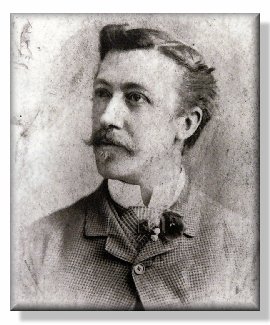
William Flockhart (1852 – 1913) was the architect of Rosehaugh in its final incarnation. Flockhart sought perfection in all he did, and his highly strung, artistic temperament made him sometimes difficult to work for. His perfectionism and skills led to this tribute of Flockhart from the architectural critic Goodhart-Rendel: “an extremely sensitive draughtsman, potentially the best of the lot”.
In 1893, James Douglas Fletcher commissioned Flockhart to remodel Rosehaugh House. This was to take until 1902, during which time, his ideas and designs were frequently altered.
William Flockhart was born in Kilmarnock in 1852, and trained in the Glasgow School of Art. He worked for some time in Glasgow then moved to London to design for a furniture manufacturer. During this period he studied in London and Paris, widening his knowledge of English and French styles, which became evident in his remodelling of Rosehaugh.
In 1881 he set up on his own, and by 1900 his firm had become very fashionable with some well known, rich and titled clients. Using his various skills he not only designed the exterior and interior of buildings but was also commissioned as architect to the Derwent Valley Water Board and to the Union Castle Mail Steamship Company.

Rosehaugh House – original plan for re-modelling. developed by William Flockhart.

Chair designed by William Flockhart for Wylie and Lochead for the Glasgow Exhibition of 1888. Courtesy of Dr Alastair Ward.
